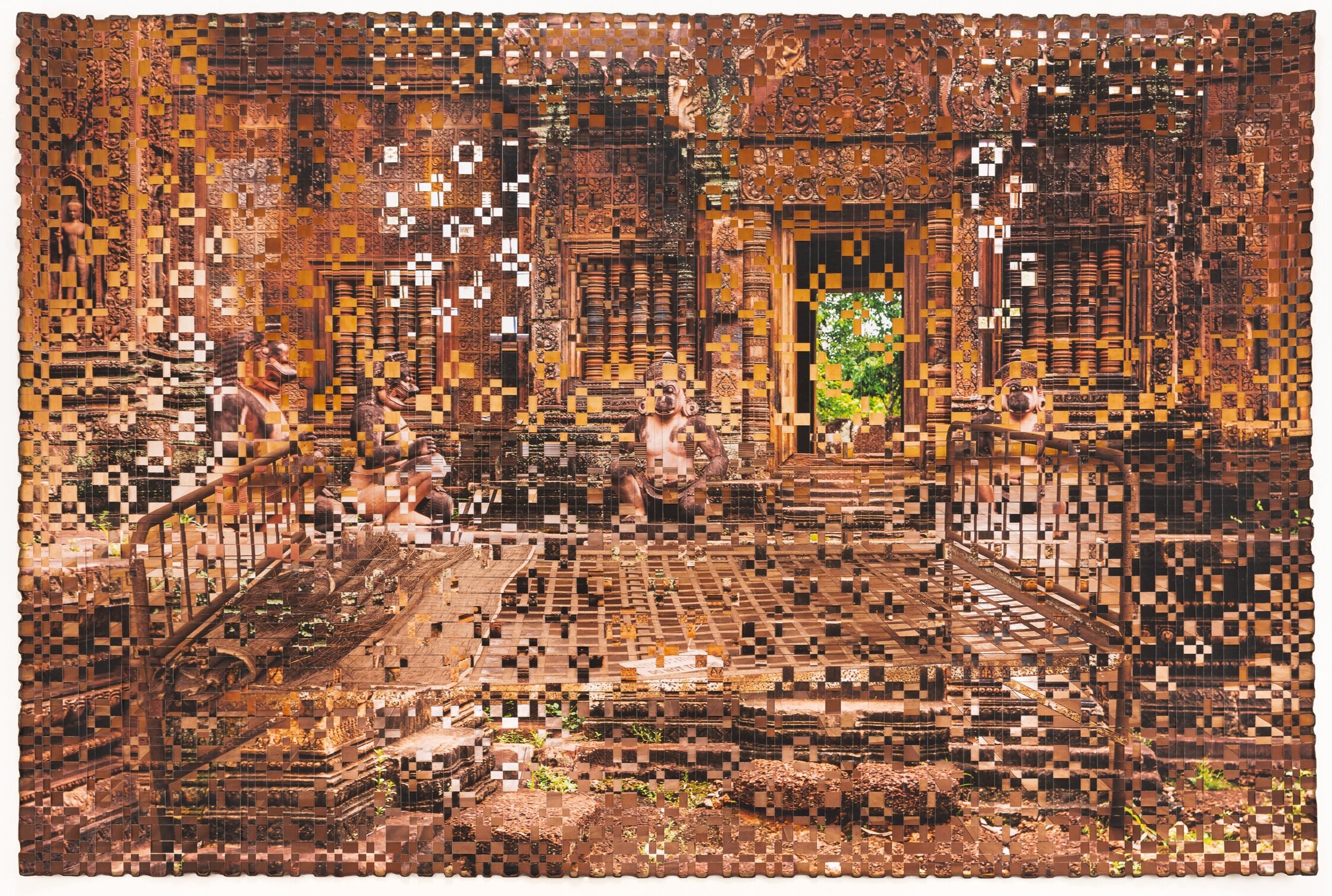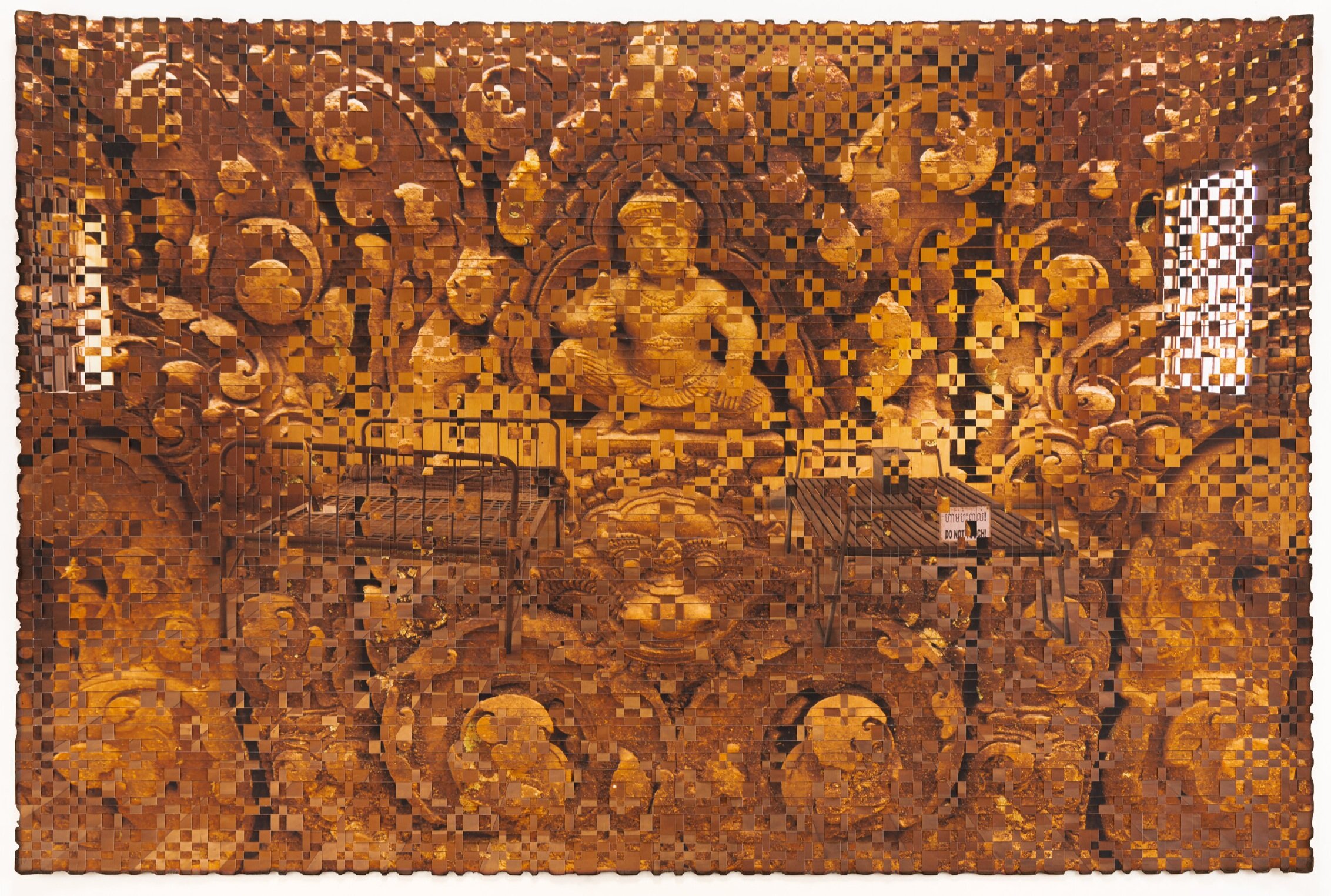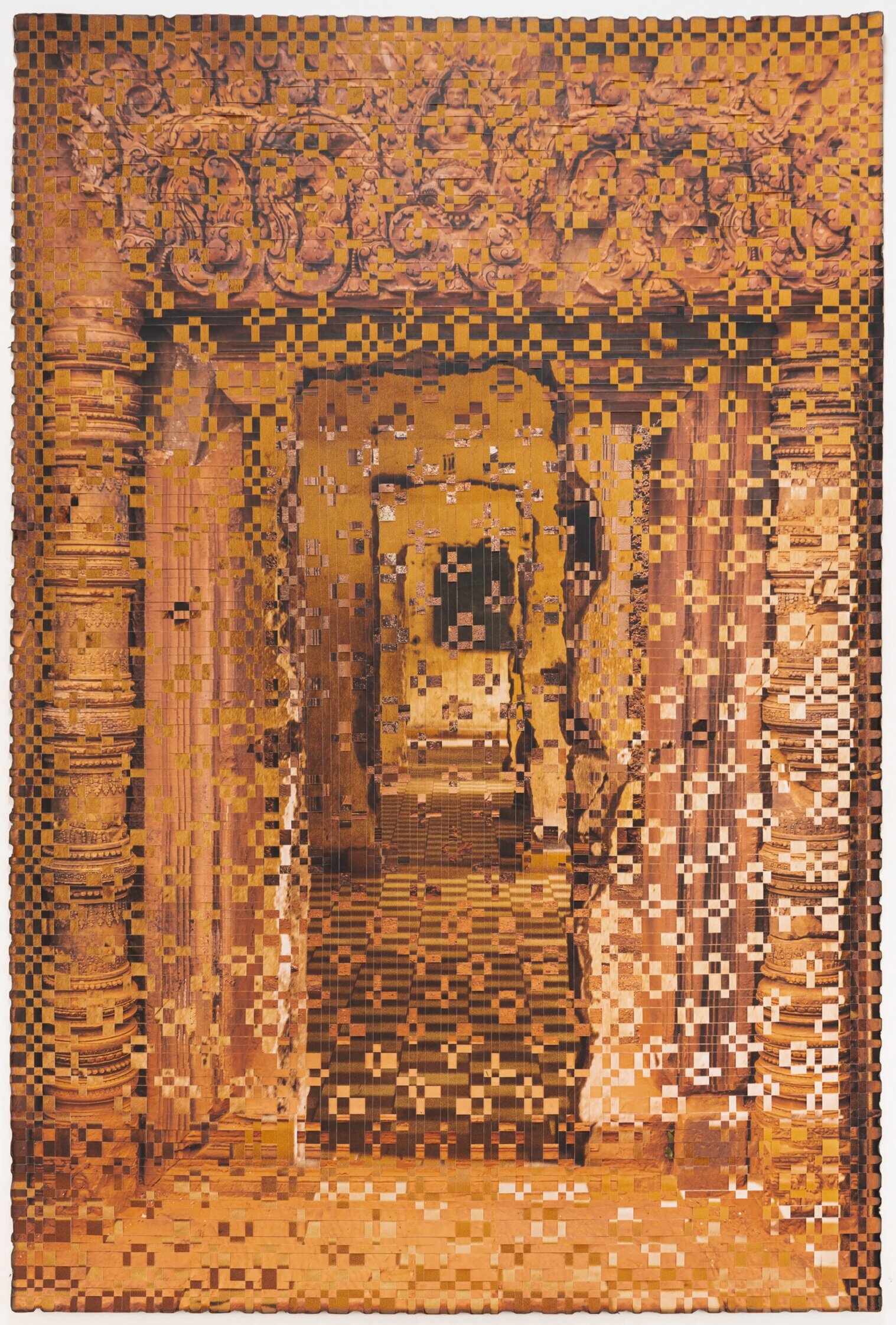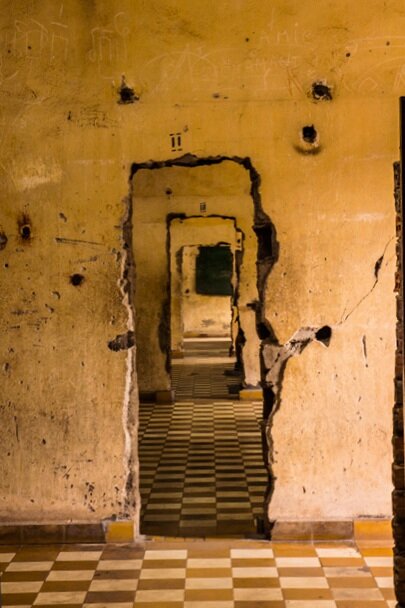Dinh Q. Lê | Monuments and Memorials | Viewing Room
Dinh Q. Lê, Monuments and Memorials 8, 2021, c-prints and linen tape, 49.5 x 71" framed
INQUIRE>
Elizabeth Leach Gallery is pleased to present Monuments and Memorials, a new series of large-scale photo weavings by Dinh Q. Lê that reflect on collective memory and architectural commemoration. Lê’s evocative photographic artworks combine interior and exterior pictures of Cambodian sites and pair the seemingly unresolvable, competing narratives of a country’s past and present.
Dinh Q. Lê, Monuments and Memorials 9, 2021, c-prints and linen tape, 49.5 x 71" framed
INQUIRE>
Dinh Q. Lê, Monuments and Memorials 1, 2021, c-prints and linen tape, 71 x 49.5" framed
INQUIRE>
Wall carving from the Angkor temples. Image provided by the artist.
Interlaced vertical and horizontal strips of documentary photographs juxtapose grandiose ancient Angkor temples with sparse interior rooms of the Tuol Sleng Museum and other memorial locations marred by the violence inflicted by the Khmer Rouge regime (1975-1979).
Warm, golden-hued pictorial tapestries belie the painful legacy of the empty torture rooms. The weaving process of the artist’s photographic constructions physically intertwine narratives to reiterate the dichotomous nature of cultural memory.
LEFT: The interior image of Tuol Sleng is interwoven with an archway from the Angkor temples to create Monuments and Memorials I, 2021. Images provided by the artist.
Dinh Q. Lê in his studio. Image provided by the artist.
“Through his work, he is able to masterfully ascend the minefields of conflicting narratives to bring us to a better understanding of the complex nature of the Vietnam War era and its aftermath, both in Vietnam and internationally.”
ABOUT THE WORK
A BRIEF HISTORY OF THE KHMER ROUGE
The exterior of the Tuol Sleng Genocide Museum. Image source: Wikipedia.
The Cambodian genocide was the systematic persecution and killing of Cambodians by the Khmer Rouge under the leadership of Communist Party general secretary Pol Pot, who radically pushed Cambodia towards communism. It resulted in the deaths of 1.5 to 2 million people from 1975 to 1979, nearly a quarter of Cambodia's 1975 population (c. 7.8 million) (Cambodian Genocide, Wikipedia).
Located in Phnom Penh, [Tuol Sleng] is a former secondary school which was used as Security Prison 21 by the Khmer Rouge regime from 1975 until its fall in 1979. From 1976 to 1979, an estimated 20,000 people were imprisoned at Tuol Sleng and it was one of between 150 and 196 torture and execution centers established by the Khmer Rouge (Tuol Sleng Genocide Museum, Wikipedia).
Dinh Q. Lê, Monuments and Memorials 2, 2021, c-prints and linen tape, 64.5 x 43" unframed, 71 x 49.5" framed
INQUIRE>
Dinh Q. Lê, Monuments and Memorials 4, 2021, c-prints and linen tape, 49.5 x 71" framed
INQUIRE>
REVISITING CAMBODIA: SPLENDOR AND DARKNESS, 2000-2005
“The benefit the artist offers us is the creation of something splendorous, a sense of how the humanity of these people cannot be terminated because of the way they died. Thus, by weaving other images taken from the carvings of Angkor Wat through these photographs, Dinh urges us to look at the dead again, beyond the stark fact of their victimization, and into their potential resurrection through art. ”
Dinh Q. Lê, Cambodia: Splendor and Darkness Triptych, 2005, photo-weaving and linen tape, 47.25 x 63”
To read more about the influence of the Vietnam War on Dinh Q. Lê’s body of work, download the full essay by Pulitzer Prize-winning author Viet Thanh Nguyen from the exhibition catalog, A Tapestry of Memories: The Art of Dinh Q. Lê, published by Bellevue Arts Museum, 2007.
Dinh Q. Lê, Monuments and Memorials 7, 2021, c-prints and linen tape, 43 x 64.5" unframed, 49.5 x 71" framed
INQUIRE>
“For some twenty years now, in the most imaginative ways, he has remembered for himself and us, his viewers in the U.S., Europe, and Asia, the complex history of the Vietnam War seen from both sides and its aftermath. ”
Learn more about Lê’s personal connection to the work in the exhibition catalog, Dinh Q. Lê: True Journey Is Return, curated by Rory Padeken. Published by the San Jose Museum of Art. (Sept. 14, 2018 – April 7, 2019)
LEARN MORE ABOUT THE EXHIBITION:
Dinh Q. Lê and Curator Rory Padeken discuss the meaning of Monuments and Memorials
ABOUT THE ARTIST
Dinh Q. Lê creates conceptually based multimedia work that reflects on the complex history of Vietnam, issues of war, displaced populations and how non-western cultures are depicted in western media. In July of 2015, Tokyo’s Mori Art Museum presented a retrospective of his work. Exhibiting internationally for 25 years, Lê’s work was shown in the 2013 Carnegie International (Pittsburgh, PA), dOCUMENTA (13) (Kassel, Germany), Singapore Art Museum (Singapore), Kiev Biennial (Kiev, Ukraine), a Projects 93 exhibition at the Museum of Modern Art (New York, NY) and a critically acclaimed one-person exhibition at the Asia Society in New York. Lê’s work is included in numerous permanent collections, including the Museum of Modern Art, Ford Foundation (New York, NY), Portland Art Museum (Portland, OR), San Francisco Museum of Modern Art (San Francisco, CA), Queensland Gallery of Modern Art (Brisbane, Australia) and the Zabludowicz Collection (London, England).












